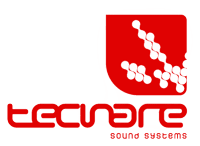What is a DAW?
A Digital Audio Workstation (DAW) is a software designed for music production and sound editing. It provides tools for multi-track recording, effect processing, non-destructive editing, and professional mixing.
Some of the most widely used DAWs in the industry include:
✅ Pro Tools – The industry standard for professional recording studios.
✅ Ableton Live – Optimal for electronic music production and live performances.
✅ Logic Pro – Intuitive approach for composition and production.
✅ Cubase – Ideal for orchestral production and advanced MIDI sequencing.
✅ FL Studio – Popular in urban music and EDM production.
✅ Reaper – Versatile and lightweight, with advanced customization options.
Each DAW offers specific workflows but shares fundamental sound production principles.
Stages of the Sound Production Process
1. Pre-production and DAW Setup
Before starting, properly configuring the working environment is crucial.
Hardware Selection and Audio Configuration
🔹 Audio Interface: Low latency and high-resolution models (e.g., Universal Audio Apollo, RME Fireface).
🔹 Buffer Size Settings: Low (32-128 samples) for recording, high (512-1024 samples) for mixing.
🔹 Sample Rate and Bit Depth: 44.1 kHz / 24-bit for music, 48 kHz / 24-bit for video.
🔹 Reference Monitors and Headphones: Flat-response models such as Yamaha HS8, Genelec 8040, or Sennheiser HD650.
2. Audio and MIDI Recording
Audio Recording Techniques
- Multi-track recording: Capturing each instrument on separate tracks for better control.
- Using preamps: Enhancing quality with preamps like Neve 1073 or API 512c.
- Appropriate microphones: Condensers for vocals (Neumann U87), dynamics for amplifiers (Shure SM57), etc.
- Gain staging: Preventing distortion by keeping levels at -18 dBFS to -12 dBFS.
MIDI Recording
- MIDI Controller Selection: Options like Native Instruments Komplete Kontrol or Arturia KeyLab.
- Quantization and humanization: Adjusting timing while maintaining natural feel.
- Velocity layering: Adjusting dynamics for greater realism in virtual instruments.
📌 Tip: Layer recordings and use double-tracking techniques to add depth to the mix.
3. Audio Editing
Take Correction
- Non-destructive editing: Using tools like Elastic Audio (Pro Tools), Flex Time (Logic Pro), or Warping (Ableton Live).
- Crossfades: Smoothing cuts in audio to avoid clicks or pops.
- Comping: Selecting the best sections from multiple takes.
Phase Correction
- Manual correction: Aligning transients in multi-microphone drum recordings or stereo guitar tracks.
- Automatic correction plugins: Waves InPhase, Sound Radix Auto-Align.
📌 Tip: Use high-pass filters to eliminate unnecessary low-frequency noise.
4. Processing and Mixing
Equalization (EQ)
- Subtractive EQ: Removing unwanted resonances before boosting frequencies.
- Parametric EQ: Detailed control with tools like FabFilter Pro-Q 3 or SSL G-Equalizer.
Compression
- Optical Compressors: Smooth vocals (LA-2A, Tube-Tech CL 1B).
- VCA Compressors: Dynamic control for drums (SSL G Bus Compressor).
- FET Compressors: Aggressiveness for bass and guitars (1176, Distressor).
Reverb and Delay
- Convolution reverb: Realistic spaces (Altiverb, Waves IR-1).
- Rhythmic delay: Tempo-synced echoes for music production.
Automation and Panning
- Volume and effects automation for added expressiveness.
- Intelligent stereo panning to create separation between instruments.
📌 Tip: Use bus mixing for group processing and CPU efficiency.
5. Mastering
Mastering provides the final polish to optimize the sound for different formats.
Mastering Stages
✅ Tonal balance: Final EQ adjustments to correct frequency buildups.
✅ Dynamic control: Multiband compression for a stable dynamic range.
✅ Limiting: Maximizing level without distortion (FabFilter Pro-L 2, Waves L2).
✅ Format conversion: Exporting in WAV 24-bit for digital distribution and MP3 for streaming.
📌 Tip: Test the mix on different playback systems (studio monitors, headphones, car speakers) before finalizing.
Optimal DAW Workflow
1️⃣ Organize sessions with clear names and colors.
2️⃣ Use session templates to speed up work.
3️⃣ Save multiple versions to avoid losing progress.
4️⃣ Utilize keyboard shortcuts for efficiency.
5️⃣ Export in different formats based on the final platform (CD, streaming, film, etc.).
Conclusion
The use of DAWs has transformed sound production, enabling professional-quality results in any setting. Correct application of recording, editing, mixing, and mastering techniques ensures optimal and competitive audio production.
🔹 Choosing the right DAW based on workflow.
🔹 Mastering advanced editing and processing techniques.
🔹 Optimizing hardware and software to achieve the best sound quality.
By applying these strategies, you can achieve high-level sound production in any professional context. 🚀
